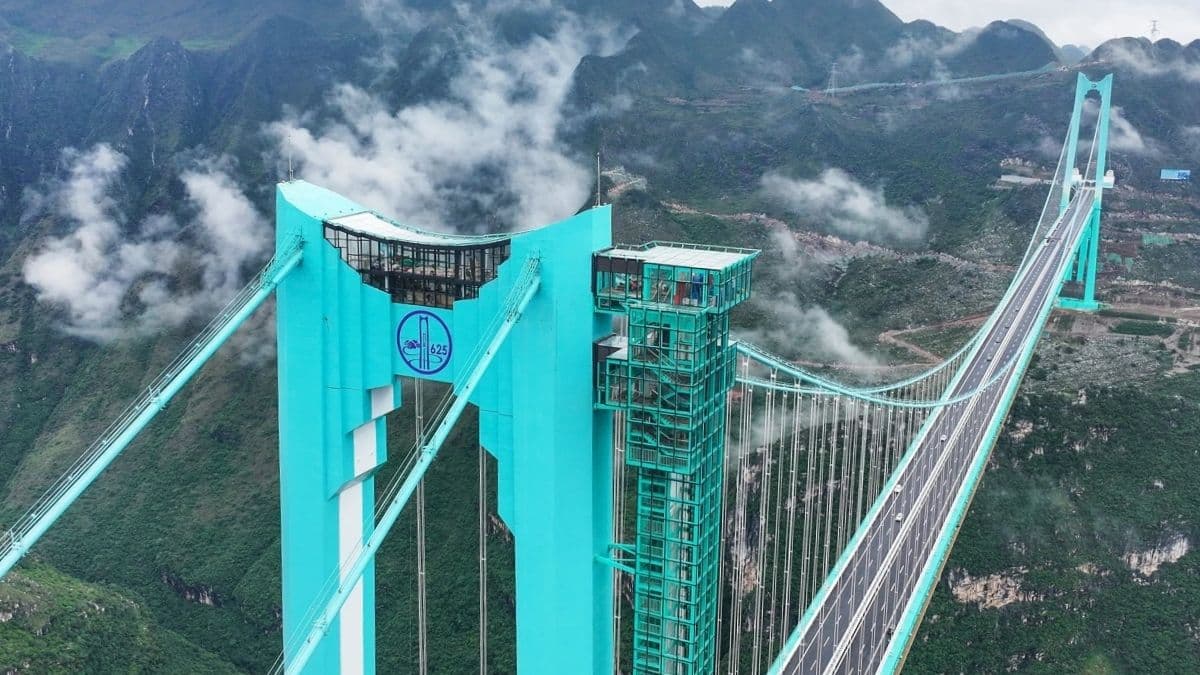Huajiang Grand Canyon Bridge opens in China as world’s highest and longest in mountainous region
China has unveiled the Huajiang Grand Canyon Bridge in Guizhou province, now recognised as the world’s highest and longest bridge in a mountainous region. The project is part of China’s wider drive to transform underdeveloped regions through large-scale infrastructure.

- China opens the world’s highest bridge, the Huajiang Grand Canyon Bridge, in Guizhou province.
- The bridge stands about 2,050 feet above a river, breaking previous height and span records.
- The project aims to boost tourism and regional economic development in a formerly impoverished area.
China officially opened the Huajiang Grand Canyon Bridge on 28 September 2025, marking a new pinnacle in the country’s ambitious infrastructure expansion.
Towering at 625 metres (2,050 feet) above the Beipan River, it is recognised as the world’s highest bridge accessible to the public.
Situated in Guizhou province, the bridge overtakes the Duge Bridge, also in Guizhou, which previously held the record as the highest bridge since 2016.
According to Chinese state media, it is also the longest bridge in a mountainous region, featuring a main span of 1,420 metres (4,660 feet).
The Huajiang Grand Canyon Bridge, which took three years to complete, stretches approximately 2,890 metres in total length.
Built at a cost of CNY 1.87 billion, it adopts a steel truss suspension design. The trusses weigh around 22,000 tonnes, nearly three times the weight of the Eiffel Tower, according to the South China Morning Post.
The BBC reported that the most complex challenge during construction was managing the strong winds within the canyon. Engineers used wind deflectors and stabilising plates to convert turbulence into balance.
Additionally, the bridge incorporates a temperature control system to manage heat within the concrete structure, while smart cable strands embedded in the suspension system allow for real-time monitoring of the bridge’s stability and performance.
Officials said the project will reduce travel time across the canyon from two hours to two minutes, dramatically improving transport efficiency in this mountainous region.
Built over three years and eight months, it has been hailed domestically as an “infrastructure miracle” and a key driver of regional connectivity and tourism.
The bridge also features several tourist-oriented amenities. A high-speed glass elevator lifts visitors to a coffee terrace 2,600 feet above the river, while thrill-seekers can experience bungee jumping or traverse a glass walkway 1,900 feet above the gorge.
Technician Tian Hongrui, who participated in the construction, told CCTV News he felt “proud to have left a mark.” He added, “Leaving now is bittersweet, but this isn’t the end. It’s the start of a new chapter.”
Guizhou, once among China’s least developed provinces, has been transformed through extensive infrastructure investment as part of Beijing’s broader poverty alleviation strategy.
The province now hosts more than 30,000 bridges, either completed or under construction — a remarkable achievement driven by the need to overcome its rugged and mountainous terrain.
Home to nearly 40 million people, Guizhou’s steep valleys and karst landscapes have historically posed severe challenges for transport and connectivity. Major infrastructure projects, including the Huajiang Grand Canyon Bridge, symbolise China’s efforts to link remote communities and stimulate regional development through technological innovation.
The Huajiang Grand Canyon Bridge stands as both an engineering marvel and a socio-economic catalyst, reducing travel times, improving access, and fostering sustainable tourism in China’s interior.
Its combination of architectural ambition, environmental adaptation, and digital monitoring marks a new era in high-altitude bridge design.








0 Comments